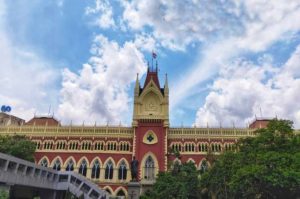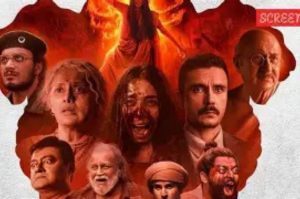The Calcutta High Court has dismissed a petition that sought to challenge the Central Board of Film Certification’s (CBFC) approval for The Bengal Files, a controversial film that revisits the turbulent political and communal history of Bengal. The case, which was brought by Santanu Mukherjee, the grandson of freedom fighter Gopal Chandra Mukherjee (popularly known as Gopal Patha), questioned the portrayal of his grandfather and accused the film of defaming his legacy.

Justice Amrita Sinha, while hearing the case, noted that the plea was procedurally flawed and legally untenable. The ruling reaffirmed the autonomy of the CBFC in granting certification and underlined that objections to cinematic portrayals should be pursued through defamation suits rather than writ petitions.
Why Was the Petition Filed?
Santanu Mukherjee alleged that The Bengal Files tarnishes the image of his grandfather, Gopal Patha, by depicting him as a violent, mafia-like figure.
- The use of the terms “Patha” (goat) and “Kasai” (butcher) in relation to his name, he argued, carried derogatory undertones and painted his grandfather as a communal mob leader rather than a patriot.
- Mukherjee further claimed that the film’s makers deliberately distorted history, ignoring the context in which Gopal Patha acted during the 1946 riots in Kolkata, commonly known as Direct Action Day.


His contention was that the CBFC should never have cleared the film without deeper scrutiny, given the sensitive portrayal of historical personalities.
The Calcutta High Court Reasoning
Justice Sinha made several observations in dismissing the plea:
- Failure to Exhaust RTI Appeal:
Mukherjee had earlier sought information under the Right to Information Act regarding the CBFC’s decision-making but did not pursue an appeal when the information was not provided. The court held that skipping due legal procedure weakened the case’s maintainability. - Defamation, Not Writ Jurisdiction:
The judge emphasized that claims of defamation against an individual or their family cannot be the basis of a writ petition. The proper course of action lies in civil or criminal defamation suits, as per the Indian Penal Code, 1860 and Civil Procedure Code. - CBFC’s Role Protected:
Once the CBFC grants certification under the Cinematograph Act, 1952, the scope for judicial intervention is limited unless there are clear violations of law, such as obscenity, hate speech, or threats to national security.
This ruling essentially upheld the sanctity of artistic certification while reminding petitioners of the appropriate channels to seek redress.
The Bengal Files: A Film Stirring Controversy
Directed by Vivek Agnihotri, The Bengal Files follows the template of his earlier work The Kashmir Files—dramatizing episodes of historical violence and presenting them as suppressed truths. The film reportedly focuses on:
- The Direct Action Day riots of 1946, when communal violence engulfed Calcutta, leading to thousands of deaths.
- The subsequent Noakhali riots, which saw targeted violence against Hindus in present-day Bangladesh.
- The role of local leaders like Gopal Patha, who mobilized resistance during the unrest.
The controversy lies in how the film blurs lines between artistic interpretation and historical accuracy. While its supporters argue that it sheds light on neglected episodes of history, critics claim it distorts events for political ends and risks inflaming communal tensions.


For context, you can read more about the historical riots here:
Free Speech, Censorship, and the Cinematograph Act
The judgment also reignites debate on the balance between free expression and accountability in cinema.
- Article 19(1)(a) of the Indian Constitution guarantees freedom of speech and expression.
- Restrictions under Article 19(2) allow curbs on grounds like defamation, public order, or morality.
- The Cinematograph Act, 1952 empowers the CBFC to certify films under categories like U, UA, A, and S. It cannot, however, act as a censoring body post-clearance unless challenged under specific grounds.
By dismissing the plea, the High Court reinforced the idea that courts will not act as super-censors and that cinema deserves protection as a form of creative speech, even if it offends or unsettles sections of society.
For legal background:
Political and Social Fallout
Despite its clearance, The Bengal Files has faced hurdles in Bengal:
- Theatres Reluctant to Screen: Many cinema owners reportedly declined to screen the film due to political pressure and fear of unrest.
- Unofficial Ban Allegations: Director Agnihotri claimed that West Bengal had effectively imposed a silent ban, even though the CBFC and courts had permitted its release.
- Appeals to Higher Authorities: Prominent actors like Victor Banerjee appealed to the President of India, urging protection of the film’s right to be screened.
This reflects a growing trend where films are not formally banned but are stifled by indirect means, raising serious concerns about the health of free expression in India’s democracy.
Cinema as Collective Memory
The portrayal of freedom fighters and historical figures often sparks disputes. Similar controversies have occurred with films like Padmaavat, The Legend of Bhagat Singh, and The Kashmir Files.
In each case, filmmakers argue they have the right to interpret history through their lens, while critics and descendants of historical figures object to perceived inaccuracies.
This dynamic reveals cinema’s dual role:
- As artistic storytelling, free to dramatize and interpret.
- As public history, shaping collective memory for millions who may not read academic histories.
It is precisely this duality that makes films like The Bengal Files lightning rods for debate.
What Happens Next?
While the High Court verdict is a win for the filmmakers, the practical release of the film in Bengal remains uncertain.
- Legal Options for the Petitioner: Santanu Mukherjee still has the option to file a defamation case.
- Distribution Options for the Filmmakers: The makers could bypass theatres by releasing the film on OTT platforms such as Netflix, Amazon Prime Video, or Zee5.
- Political Question: The larger battle is whether the state allows its public screening, or if the “chilling effect” of political pressure will silence it.
Conclusion: Legal Victory, Real Battle Ahead
The Calcutta High Court’s ruling underscores a crucial point: cinematic expression cannot be curbed merely because it offends sentiments, unless there is a clear legal violation. At the same time, the continuing difficulties in screening The Bengal Files highlight a deeper challenge—freedom of expression in India often collides with political sensitivities and street-level resistance.
The outcome may set the tone for future battles between filmmakers, citizens, and the state over how India’s past is remembered—and who gets to narrate it.
Also read: Home | Channel 6 Network – Latest News, Breaking Updates: Politics, Business, Tech & More

